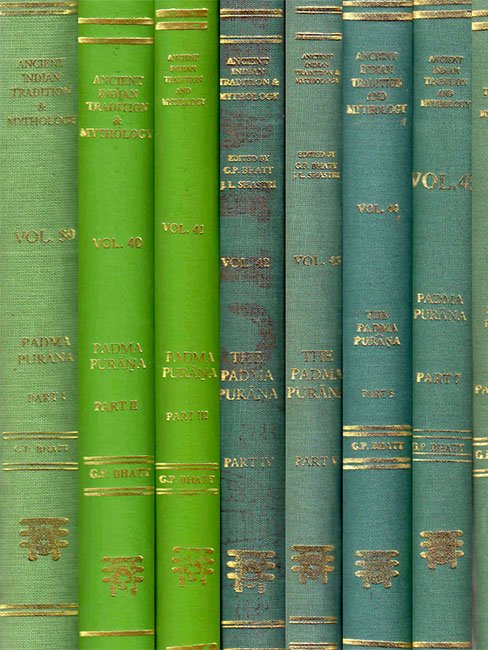The Padma Purana
by N.A. Deshpande | 1951 | 1,261,945 words | ISBN-10: 8120838297 | ISBN-13: 9788120838291
This page describes durga-sangama-tirtha which is chapter 173 of the English translation of the Padma Purana, one of the largest Mahapuranas, detailling ancient Indian society, traditions, geography, as well as religious pilgrimages (yatra) to sacred places (tirthas). This is the one hundred seventy-third chapter of the Uttara-Khanda (Concluding Section) of the Padma Purana, which contains six books total consisting of at least 50,000 Sanskrit metrical verses.
Disclaimer: These are translations of Sanskrit texts and are not necessarily approved by everyone associated with the traditions connected to these texts. Consult the source and original scripture in case of doubt.
Chapter 173 - Durgā-saṅgama-tīrtha
[Sanskrit text for this chapter is available]
Mahādeva said:
1-6. One should bathe there where that river Sābhramatī has joined Durgā and the ocean, O goddess. (Such men) become free from blemishes in this Kali age. There is no doubt about this. A man should perform a śrāddha at the confluence of Durgā. Having gone there, one should especially feed brāhmaṇas and offer (them) cows, buffaloes. This (river) is blessed, most blessed, pure and destroyer of sins, seeing which, O goddess, a man is freed from sins. This river Sābhramatī should be known as Gaṅgā. O goddess, in the Kali age she especially gives fruits for a long time. Even if there were hundreds of tongues in my mouth I shall not be able to describe her merits.
